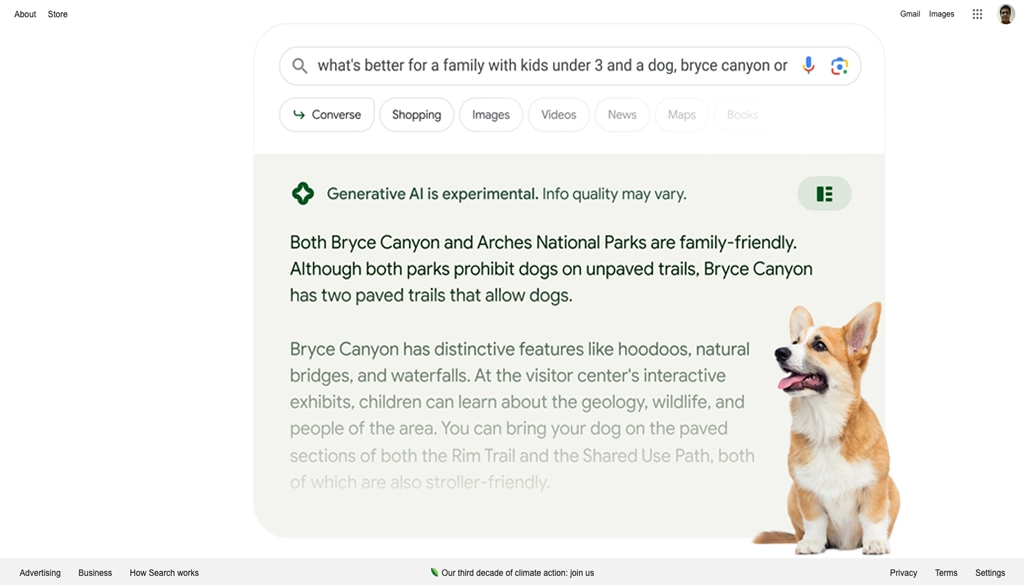Christmas passed us by and then came the new year, and all that passed way too quickly. As 2024 progresses, I am slightly annoyed with the Gaggle of Gurus, who are again decrying the coming doomsday.
The loudest honks and cackles came from TikTok, and Instagram’s social media, and digital marketing experts who pronounced search optimization near dead. Another “smarter digital marketer” confidently pronounced SEO to be gone in 2 years, and yet another was sure that Google would be irrelevant within the next five years.
Oy Gevalt !!! These pronouncements may help the source close half a dozen more SMO contracts but will not make them credible.
Search Ranking and SEO are here to stay
For as long as there is information, someone or some artifact will be searching for it, and as long as someone is searching, there will be those who will devise means of becoming more prominent in the eyes of the searching party. Thus, there will be search optimization if there is a search.
Furthermore, we will use our current web format for the foreseeable future (at least another decade). So, the Search Engine Optimization will be around for a while. Will it look the same? Definitely, Not! But when has it?
It has been nothing but changes for those of us engaged in SEO. In 2015, when I gave a talk regarding Schema and Structured Data, I had to put up with less-than-pleasant comments from those who thought SEO was a relic of the past. Even in 2021, amid the pandemic, some jokers were doing webinars on why SEO is dead, as SEM is the only way to go. Of course, if you read their website, the same bunch are SEO experts from way back and will name their love child Structured Data.
In 2024, AI-powered search ranking will become more prominent.
We are heading headlong into a new age of information curation, and the methods of optimization, old and new, will be changed, revised, and improved, but search optimization will remain.
There will be turmoil. Since August, we have already begun seeing the gyrations of SERP and the 8.5 seismic changes in search rankings. So, we need to prepare for this change, which will mean getting acclimated to changing our optimization methods.
Here are my predictions of what we will be doing for improved visibility in both human and AI search in 2024:
With Google’s new AI model, Gemini, and the evolution of the Search Ranking (Search Engine Results Pages or SERP) through Google’s Search Generative Experience (SGE) and Bing Copilot and its ubiquitous entanglement with all things Microsoft, change will accelerate. We will find that content quality and improved user experience will contribute even more to high search ranking.
There are Five concepts we should take to heart to improve our search rankings for 2024.
As rich results in Google SGE and SERPs evolve, optimizing for these elements becomes increasingly crucial. This involves creating diverse content types that are easily accessible and engaging, ensuring your content stands out in increasingly competitive SERPs.
-
-
- Focus on publishing fast-loading pages with relevant, helpful, unique content.
- Prioritize experiential/informational videos, web stories, podcasts, webinars, and visual optimization.
- Utilize FAQ and People Also Ask (PAA) sections effectively.
-
A robust content strategy should be data-driven, creating content that meets user needs at every stage of their journey. This involves understanding user intent, leveraging buyer personas, and aligning content with user experience (UX).
-
-
- Identify and fill relevant content gaps.
- Regularly review content performance.
- Create personalized content based on user intent and touchpoints.
- Focus on various types of helpful content, ensuring high levels of Expertise, Authoritativeness, Trustworthiness, and Experience.
-
User engagement and experience are critical factors in Google’s search results. Brands should aim to enhance their content’s overall quality and user experience to meet and exceed searcher expectations. As a by-product, Personalization will become more significant in search. Brands should leverage customer data to deliver personalized experiences, ensuring content relevance and engagement based on user profiles and behaviors.
-
-
- Improve the quality of content and digital asset experience.
- Focus on creating expert-level content that is compelling and meets searcher needs.
- Integrate tightly with CDP and CRM systems for personalized experiences.
- Focus on clean data, audience segmentation, and data-driven campaigns.
-
For most brands, a more personalized and localized approach is necessary. This involves optimizing the entire local consumer journey, not just listings management. Leveraging brand mentions and social proof is crucial. Brands should focus on understanding customers’ needs and ensuring their presence in relevant conversations and platforms.
-
-
- Add localized experiences to build expertise, engagement, and traffic.
- Focus on local posts, quality images, videos, and web stories.
- Understand customer questions/topics and create targeted strategies.
- Earn brand mentions and citations from respected sources and relevant influencers.
-
Finally, a multichannel approach is essential to capitalize on SERPs’ limited inventory for organic listings. Brands should be present and consistent across different channels to maximize visibility and engagement.
-
-
- Optimize customer journeys across various channels and content types, including videos, images, FAQs, PAAs, news, and webinars.
- Ensure consistency and presence across all channels.
- Your presence in all ports of call is required so you can no longer forget about social media
-
These action lists provide a comprehensive roadmap for brands to adapt and thrive in the evolving digital marketing landscape of 2024. By focusing on these areas, brands can stay ahead in the competitive search ranking and digital marketing world.
Dream Warrior Group, a Los Angeles-based web design and digital marketing Company, provides solutions for your online marketing needs. Our expertise includes Search Engine Optimization (SEO), Social Media Posts and marketing, and Google PPC campaigns. Call us now at 818.610.3316 or click here.





